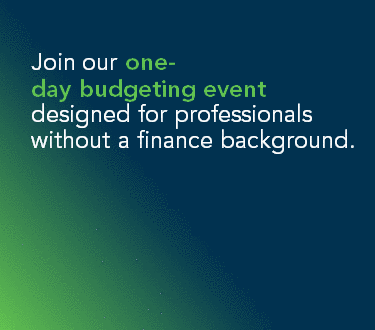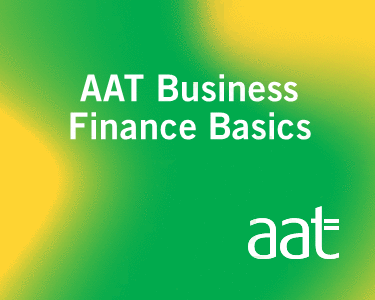As marketing channels go, newsletters are up there with the coolest of them. And if there is one channel to master for business reasons, it’s email, and here’s why…
- It’s yours. You have complete control of every aspect of it.
- You’re going to be making something and you can flex your creativity in any which way you fancy.
- You’re going to grow your own database and have a direct relationship with your audience.
- You can use it to help people.
- The process and commitment to writing it can help you navigate your own business journey. It can help you to sort ideas, clarify your thoughts and align your business.
- You will learn and grow through the process of setting it up, writing it, improving and growing it.
- You can get new clients and customers from having one.
- You can demonstrate your skills through it, your personality and what it’s like to work with you, but also, just by having one, you’re showing your ability to embrace technology, stick to deadlines, and create content and that you have business acumen and confidence in yourself.
- There are options to monetise it in ways other than gaining new clients, so it can be a way to create another revenue stream and make your business scalable.
- There are very low barriers to entry, and so many tools out there to help you.
“Social media is not enough! The algorithm will screw you, eventually. You need a list of emails. I cannot believe I’m still having to type this.” – Austin Kleon
Have a longer-term vision
Your newsletter will evolve with you. If you can get one subscriber, you can get 10. If you can make £10 a month from it, you can make £100… £1000…
Maybe two years down the line, you’d like to have a smaller percentage of your income from client work and more from stuff you create. Yes, it takes time. But you have time. How much time you dedicate will dictate how fast it grows, but even dedicating a minimum amount of time is better than none.
“Every creator needs a newsletter. It’s the only algorithm-proof way to establish a direct relationship with your audience. Your newsletter doesn’t need to be long – it can be a single sentence. But it needs to provide value and be sent consistently.” – Josh Spector
Content versus distribution
Once people start a newsletter, they often spend 95% of their energy writing it and 5% distributing it, and wonder why their subscriber list isn’t growing. It’s because you’ve got to tell people about it, over and over again. You’ve got to ask people to sign up and tell them why they should want to. As marketing emails increasingly get automatically filed into marketing folders, you’ve got to make yours un-unopenable.
25 ideas to grow your email newsletter list
- Create a guide or ebook
Develop an in-depth resource that solves a specific problem your audience faces. Make it substantial enough that people genuinely want to exchange their email address for it. - Offer exclusive templates or worksheets
Design practical tools that your audience can use immediately. Budgeting spreadsheets, content calendars, or project planning templates work particularly well. - Develop a free mini-course
Break down your expertise into a series of emails delivered over several days. This approach builds trust while demonstrating your knowledge. - Share industry reports or research
Compile valuable data or insights that aren’t easily available elsewhere. Original research positions you as an authority in your field. - Provide checklists and cheat sheets
Create quick-reference guides that people can bookmark and return to. These are perfect for busy professionals who need information at a glance. - Add opt-in forms to high-traffic pages
Place subscription boxes on your most popular blog posts and service pages. Monitor your analytics to identify where visitors spend the most time. - Use exit-intent pop-ups strategically
Trigger a subscription offer when visitors are about to leave your site. Make the offer compelling enough to reconsider their departure. - Create a dedicated landing page
Design a focused page specifically for newsletter sign-ups. Remove distractions and clearly communicate the value subscribers will receive. Ask them to do one thing (subscribe). - Implement scroll-triggered opt-ins
Display subscription forms when visitors have scrolled through a certain percentage of your content, indicating genuine interest. - Add a welcome mat to your homepage
Use a full-width banner at the top of your site to promote your newsletter without being intrusive. - Promote your newsletter consistently on social platforms
Share snippets from your latest newsletter on LinkedIn, Instagram, and other relevant platforms. Always include a clear call-to-action to subscribe. - Host live sessions and webinars
Use live content to provide immediate value, then offer your newsletter as a way to continue the conversation and receive similar insights regularly. - Create social media-exclusive previews
Share teasers of your newsletter content on social platforms, encouraging followers to subscribe to the full version. - Partner with other newsletter creators
Cross-promote with complementary businesses or creators. This exposes your content to audiences who are already engaged with newsletters. Platforms like Substack make this cross-pollination easy. - Guest on podcasts and mention your newsletter
When appearing on other people’s content, naturally reference your newsletter as a resource for listeners who want to stay connected. - Speak at events and conferences
End presentations with a clear invitation to join your newsletter. Provide a short, memorable URL that’s easy for attendees to remember. - Join online communities and forums
Contribute genuinely to discussions in your industry. When appropriate, mention your newsletter as an additional resource. - Network at local business events
Have a simple way to capture email addresses from people you meet. A business card with your newsletter URL or a QR code works well. - Collaborate with complementary businesses
Partner with companies that serve similar audiences but aren’t direct competitors. This could involve joint content creation or resource sharing. - Create a referral programme
Encourage existing subscribers to share your newsletter with friends. Offer incentives like exclusive content or early access to new products. Check out SparkLoop for this. - Add newsletter sign-up to your email signature
Include a brief mention of your newsletter in every email you send with an eye-catching reason to subscribe. This passive approach captures people who are already interested in your communications. - Use offline opportunities
Include newsletter information on business cards, brochures, and other printed materials. Don’t underestimate the power of offline connections. - Leverage customer touchpoints
Add newsletter opt-ins to purchase confirmations, booking confirmations, or service completion emails when people are already engaged with your business. Don’t forget to give them a clear ‘why’. - Create urgency with limited-time content
Occasionally offer time-sensitive resources or insights exclusively to newsletter subscribers. This creates FOMO (a fear of missing out). - Personalise your approach
Segment your opt-in offers based on where visitors come from or what content they’re viewing. A personalised offer converts better than a generic one.
Remember that quality matters more than quantity. It’s better to have 100 engaged subscribers who genuinely want to hear from you than 1,000 people who ignore your emails. Focus on providing consistent value, and your list will grow organically through word-of-mouth recommendations.
Monitor your sign-up sources to understand which strategies are working best for your audience. This data will help you focus your efforts on the most effective approaches while gradually testing new methods.
Building an email list takes time and consistency, but the long-term benefits for your business will be substantial. Your newsletter is your direct line to your most interested prospects and customers.











